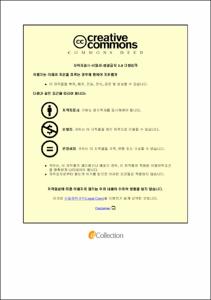Extraction and Encapsulation of Squalene Rich Cod (Gadus macrocephalus) Liver Oil Using Supercritical CO2 Processes for Oxidative Stability Enhancement
- Abstract
- Cod liver oil (CLO) was extracted using conventional hexane and pressing methods or ecofriendly supercritical carbon dioxide (SC-CO2). The extraction main parameters including temperature (A), pressure (B), and CO2 flow rate (C) were optimized using response surface methodology. The oil chemical composition, safety, thermostability, and biological properties were characterized. The optimized SC-CO2 extraction conditions were A = 49°C, B = 29.9 MPa, and C = 4.97 mL/min. Time-dependent extraction curves revealed a 68%, 85%, and 89% CLO recovery in 5, 15, and 20 h, respectively. SC-CO2-extracted oil contained the highest squalene (≈150 µg/mL) and vitamins D and K concentrations and the lowest toxic heavy metal levels. Thermogravimetric analysis indicated that SC-CO2-extracted oil was more susceptible to thermal degradation because of its high purity. SC-CO2-extracted CLO exhibited radical scavenging and antimicrobial functions and was cytotoxic for cancer cells suggesting its potential use in the nutraceutical industry and novel functional material designs. Solid-lipid particles(SLPs) were obtained using particle production from gas saturated solutions (PGSS) process, which is a clean process, with the wall matrix poly-ethylene glycol. The yield and encapsulation efficiency were 71.13±0.44%, 35.52±0.22%, respectively under the conditions of 25 MPa, 4:20 (SCO:PEG, w/w); 9-PEG. Bulk density and tapped density were 0.30±0.02 g/cm3, 0.33±0.02 g/cm3, respectively, at the 9-PEG, and Carr’s index value was 9.09 ±0.97. The particle size was 315.83 nm at 9-PEG, and the typical form of powder from PGSS process was confirmed through a scanning electron microscope. The presence of squalene in the CLO and the encapsulation of CLO in the SLPs were confirmed through fourier transform infrared spectroscopy analysis. The crystallinity of SLPs were confirmed using the X-Ray diffractometer analysis and Differential scanning calorimiter analysis. Antioxidant activity evaluation was performed, and 9-PEG was showed the highest activity at ABTS+ 142.60±5.71 mgTE/g, at DPPH 30.38±1.44 mgTE/g, respectively. Oxidation stability evaluation of SLPs was performed, peroxide value of CLO changed 7.46±0.21 meq/kg to 22.50±0.30 meq/kg, whereas SLP did not show a significant change.
- Issued Date
- 2022
- Awarded Date
- 2022. 8
- Type
- Dissertation
- Publisher
- 부경대학교
- Affiliation
- 부경대학교 대학원
- Department
- 대학원 식품공학과
- Advisor
- 전병수
- Table Of Contents
- 1. Introduction 1
1.1 Gadus macrocephalus and bioactive compounds 1
1.2 Supercritical carbon dioxide extraction 2
1.3 Particle production from gas saturated solutions 3
1.4 Objectives of the study 5
2. Materials and methods 6
2.1 Sample preparation 6
2.2 Chemical reagent 6
2.3 Oil extraction 7
2.3.1 Conventional extraction 7
2.3.2 SC-CO2 extraction 7
2.3.3 Experimental design for SC-CO2 extraction optimization 10
2.4 Proximate composition analysis of cod 13
2.5 Physicochemical analysis of cod liver oil 13
2.5.1 Color analysis 13
2.5.2 Chemical composition of cod liver oil 14
2.5.3 Heavy metal analysis 14
2.5.4 Thermogravimetric and FT-IR spectroscopic analyses 15
2.6 In vitro biological activities of the oil 17
2.6.1 Analysis of the antioxidant activity 17
2.6.2 Analysis of the antimicrobial activity 17
2.6.3 Cell culture and cell viability 18
2.7 Preparation of particles by PGSS process 19
2.8 Encapsulation efficiency (EE) by HPLC analysis 23
2.9 Particle characterization 24
2.9.1 Bulk, tapped density and compressibility index of the SLPs 24
2.9.2 Particle size analysis (PSA) 24
2.9.3 Fourier transform infrared spectroscopy (FTIR) 25
2.9.4 X-Ray Diffractometer (XRD) 25
2.9.5 Scanning electron microscope (SEM) 25
2.9.6 Differential scanning calorimeter (DSC) 26
2.10 In vitro antioxidant activity assay 26
2.11 Acid value (AV) and peroxide value (POV) 27
2.12 Statistical analysis 28
3. Results and discussion 30
3.1 Proximate composition analysis 30
3.2 Characterization and extraction optimization of cod liver oil 30
3.3 Thermal properties and FT-IR spectroscopy 41
3.4 Effect of the extraction technique on the bioactive compounds of cod liver oil 45
3.5 Heavy metal composition 45
3.6 In vitro biological activities of the oils 49
3.7 Encapsulation yield and efficiency (EE) 53
3.8 Bulk density and tapped density of SLPs and particle size analysis 56
3.9 Morphologies of SLPs 59
3.10 Fourier transform infrared spectroscopy (FTIR) 61
3.11 X-Ray Diffractometer (XRD) and Differential scanning calorimeter (DSC) 63
3.12 Antioxidant activity 68
3.13 AV and POV value of SLPs 70
4. Conclusions 72
References 74
Abstract (in Korean) 84
Acknowledgement 87
- Degree
- Master
- Files in This Item:
-
-
Download
 Extraction and Encapsulation of Squalene Rich Cod (Gadus macrocephalus) Liver Oil Using Supercritica.pdf
기타 데이터 / 1.9 MB / Adobe PDF
Extraction and Encapsulation of Squalene Rich Cod (Gadus macrocephalus) Liver Oil Using Supercritica.pdf
기타 데이터 / 1.9 MB / Adobe PDF
-
Items in Repository are protected by copyright, with all rights reserved, unless otherwise indicated.